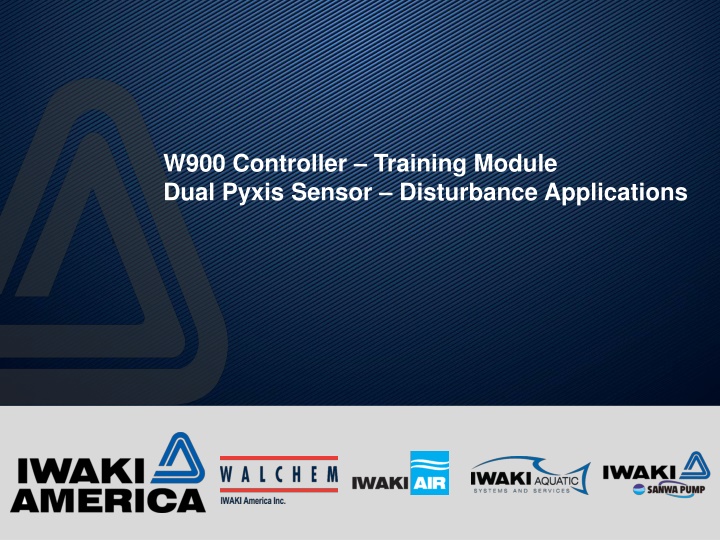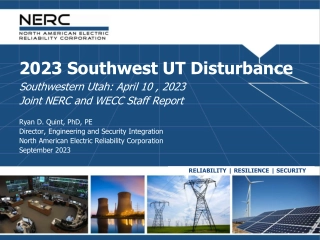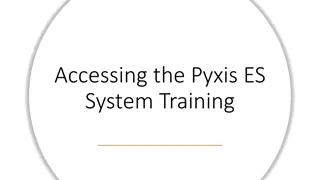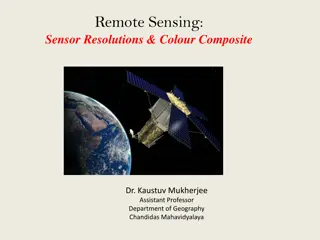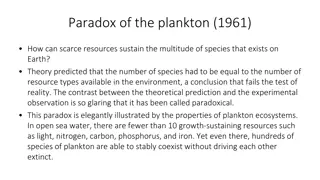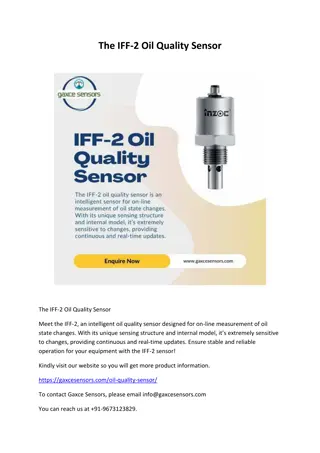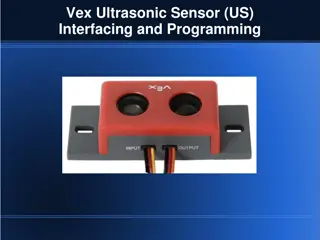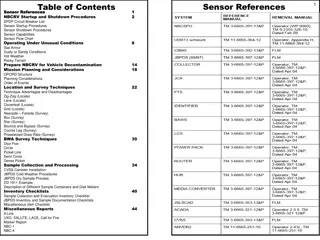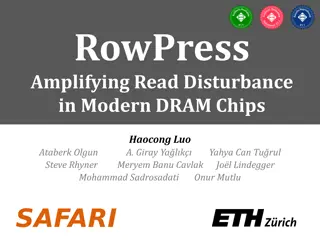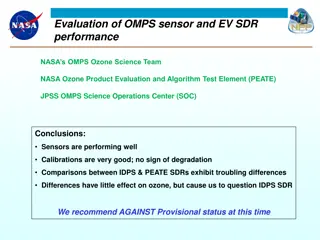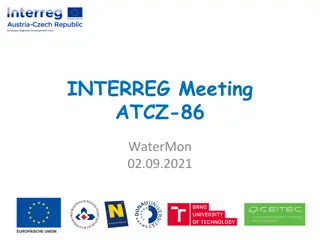Pyxis Sensor Disturbance Applications
This module focuses on the dual implementation of Pyxis sensors for detecting and managing disturbances in various applications. It delves into the technical aspects of how the sensors operate and their role in ensuring stability and efficiency in different systems. The content provides insights into optimizing sensor performance and overcoming challenges related to disturbances, offering valuable knowledge for professionals in the field.
Download Presentation

Please find below an Image/Link to download the presentation.
The content on the website is provided AS IS for your information and personal use only. It may not be sold, licensed, or shared on other websites without obtaining consent from the author.If you encounter any issues during the download, it is possible that the publisher has removed the file from their server.
You are allowed to download the files provided on this website for personal or commercial use, subject to the condition that they are used lawfully. All files are the property of their respective owners.
The content on the website is provided AS IS for your information and personal use only. It may not be sold, licensed, or shared on other websites without obtaining consent from the author.
E N D
Presentation Transcript
W900 Controller Training Module Dual Pyxis Sensor Disturbance Applications
Dual Pyxis Sensor Disturbance Applications This presentation will cover the following: > PTSA and Fluorescent Polymer Dual Inline Sensor Features > Use the Dual Sensor in W900 Disturbance algorithms On/Off Disturbance Mode
Dual Pyxis Sensor Disturbance Applications PTSA and Fluorescent Polymer Dual Inline ST-588 Sensor Features ST-588 inline sensor is designed for the direct measurement of both PTSA and Fluorescent Polymer ST-588 sensor has proprietary algorithms to determine the concentrations of PTSA and active polymer residual simultaneously ST-588 offers a combination of dual (2x) 4-20mA output signals, one for PTSA and one for Fluorescent Polymer.
Dual Pyxis Sensor Disturbance Applications Use the Dual Sensor in W900 Disturbance algorithms We will look at these programming examples: On/Off Disturbance Mode How do we program the Dual sensor analog inputs into the W900 controller? PTSA ppb is an analog input Polymer ppm is an analog input Polymer ppm is also a Virtual input, programmed as Disturbance
Virtual Inputs What is a Virtual Input? Sensor Inputs Example: Conductivity Sensor Analog Inputs Example: Ultrasonic Level Sensor Digital Inputs Example: Contacting Head Water Meter All of the above are physically wired into the controller. Virtual Inputs No wires; they can be used to control in the same manner as the physical inputs All of the above are found in the controller Inputs Menu
Virtual Inputs What are the types of Virtual Inputs? Calculation Redundant Raw Value Disturbance - this is the focus of this training
Disturbance Virtual Input - W900 Disturbance Virtual Input Type The impact of the secondary input (Polymer ppm) can be more precisely managed by using a new Disturbance type of virtual input channel. Based on the disturbance input channel selection, process setpoint (PTSA ppb setpoint) and maximum process value, this virtual input generates a value that is used to multiply a primary control value. Input channel values equal to the setpoint result in an output of 1.0. Therefore, when the disturbance input matches its setpoint, there is no impact on the final control output. In addition, the output value is restricted between low and high limits to allow more complete control over the impact of disturbance inputs.
Disturbance Virtual Input - On/Off Disturbance Mode Disturbance Virtual Input Type Disturbance On/Off Control Mode (Discrete) On/Off control mode is enhanced to add a disturbance input that is multiplied with the user-entered setpoint. Inhibitor Control from PTSA Fluorometer Adjusted for Polymer Level Inhibitor feed is commonly controlled based on primary feedback of the product level from a PTSA fluorometer. Trim control on Polymer level (also feedback) is added to adjust the inhibitor feed rate to maintain a desired Polymer level. The goal is control to 100 ppb of PTSA which should give 10 ppm of polymer in an unstressed system. So if the PTSA is being held at 100 ppb yet the polymer is too low, the PTSA setpoint is increased to feed more polymer into the system.
Disturbance Virtual Input - On/Off Disturbance Mode Programming Inputs Polymer (S21) Analog Input: 4mA=0ppm and 20mA=20ppm PTSA (S22) Analog Input: 4mA=0ppb and 20mA=200ppb Polymer Disturbance (V1) Virtual Input: See next slide for settings
Disturbance Virtual Input - On/Off Disturbance Mode Polymer Disturbance (V1) Virtual Input Menu Disturbance Input= Polymer (S21) Type=Disturbance Input
Disturbance Virtual Input - On/Off Disturbance Mode Polymer Disturbance (V1) Virtual Input These user defined programmed settings are used to calculate the Disturbance Value: When S21=8ppm (Min Disturbance), the multiplier applied to the PTSA setpoint=1.20 When S21=10ppm (Max Disturbance), the multiplier applied to the PTSA setpoint=1.00 You don t have to use the whole range of the input. You want to put in the lowest and highest polymer reading and how much you want to multiply the PTSA setpoint by at these extremes.
Disturbance Virtual Input - On/Off Disturbance Mode Polymer Disturbance (V1) Virtual Input Menu Calculated Disturbance Input Value Current Polymer (S21) Input Value When S21=8ppm (Min Disturbance), the multiplier applied to the PTSA setpoint=1.20 When S21=10ppm (Max Disturbance), the multiplier applied to the PTSA setpoint=1.00 Based on the above user defined settings for Min and Max Disturbance: At a Polymer Input Value=9.03ppm, the calculated Disturbance Input Value=1.10
Disturbance Virtual Input - On/Off Disturbance Mode Output Relay Menu Programmed as On/Off Disturbance The current Setpoint=100ppb of PTSA Input= PTSA (S21) Disturbance Input= Polymer Dist (V1)
Disturbance Virtual Input - On/Off Disturbance Mode Output Relay Menu Programmed as On/Off Disturbance Disturbance Relay multiplies the original Setpoint times the Disturbance Input to get the Current Setpoint. So a Polymer Disturbance of 1.10 yields a new PTSA setpoint=109.7ppb Trim control on Polymer level is added to adjust the inhibitor feed rate to maintain a desired Polymer level.
Open Discussions Questions and Answers THANK YOU
